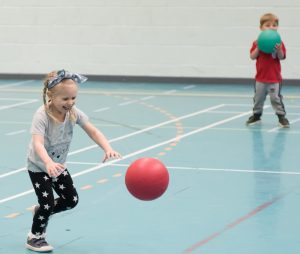This week is children’s mental health week which aims to highlight the importance of mental health among children and young people. The theme of this year (2023) is ‘Let’s Connect’ to encourage people to connect with others in healthy, rewarding, and meaningful ways.
Following the pandemic when children were unable to attend school, clubs or see friends to play with, children’s mental health suffered. I have 2 sons, and from a personal perspective, I can see how much of an impact this had on their mental health and also on my own. I now value so much more that I am able to connect with others and I know my sons are much happier for it!
You might not be aware of the positive benefits being active has on mental health.
Being active is not just good for children physically, it has such a beneficial impact on mental health too. Experts agree that the younger we start exercising the better off we’ll be later on in life, and it’s never too late to start. They also urge parents to take part in their children’s physical activity – something we definitely encourage at Leapfrog Sports!
So, how does exercising help children’s mental health?
Physical activity keeps the body strong and healthy and can improve mental health by decreasing symptoms of depression, anxiety, pain and loneliness.
Without going into too much detail, feel-good chemicals called endorphins, are released by the brain during physical activity which helps to improve mood, energy levels and even sleep – kids who are active every day are also better sleepers!
Being physically active can also help anxious children as it can direct the brain away from worrying for example, and allow them to focus on the demands of the physical activity, develop new skills and achieve a sense of accomplishment.
If a child is feeling lonely, sharing physical activities can give them a sense of belonging and friendship. Children with social anxiety might find it difficult to be in a group environment, but having a sport as a focus may take away some of the social pressure. Over time this can help children to develop confidence and build friendships.
Children who participate in regular physical activity have improved relationships and a more positive body image. Seeing and appreciating what their body can do, rather than just how it looks, is a great way for a child to build a positive body image and self-esteem.
So, how can you encourage children to be physically active?
Start small any changes will have a positive impact. Just try to introduce one form of activity every day. This could be a walk, playing a game of tig at home, batting a balloon backwards and forwards and trying not to let it touch the floor, or just dancing around to music.
Use exercise as a reward. Try not to see it as a chore but something fun to do so children look forward to it – have fun!
Of course, you could join a club like Leapfrog Sports, where children get active, build confidence, make friends and have fun by playing lots of games to get them moving and you can then play some of their favourites at home too.
What is your favourite way to get active and exercise? I’d love to know!
Jo





Leave A Comment